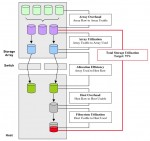If there is a universal best practice, it’s the simple idiom, “use the right tool for every job”. We in IT spend so much time trying to fit square pegs into round holes, it becomes second nature. But the time has come to adopt a new best practice: Use process solutions to solve process problems, and technical solutions to solve technical ones.
storage utilization
Two New Storage Decisions Sessions for 2009: Capacity Management and Radical Tiered Storage!
I’m pleased to announce that I will be presenting at all four of TechTarget’s excellent end user-focused 2009 Storage Decisions conferences in North America! I’m also very excited to be developning two entirely new sessions for the show: Tools and Tricks to Manage Capacity – Knowing how much disk capacity you have allocated, how much […]
Clean Up Your Mac! Essential OS X Tidiness Tools and Techniques
Do you really know what is taking up all of your disk space? Unless you have a good tool, the answer is probably not. You might think that your “Documents” folder takes up most of the room, since you use it all the time and it has so many files in it. But even the bloated files produced by Microsoft Office pale in comparison to multimedia photo, music, and video files. And it is usually the folders that you don’t actively manage that are the worst space-wasters!
Storage Utilization Remains at 2001 Levels: Low!
I’ve been talking about storage capacity utilization for my entire career, but the storage industry doesn’t seem to be getting anywhere. Every year or so, a new study is performed showing that half of storage capacity in the data center is unused. And every time there is a predictable (and poorly thought through) “networked storage is […]
The Storage Utilization Waterfall: Raw, Usable, and Used
My February 2003 column for Storage magazine focused on the surprising difficulty of measuring storage utilization. I wrote: “A true measurement of utilization would reflect every layer of usage metrics – from raw disk in a shared array to used storage within files. Raw storage for each new frame of reference is contained within […]


